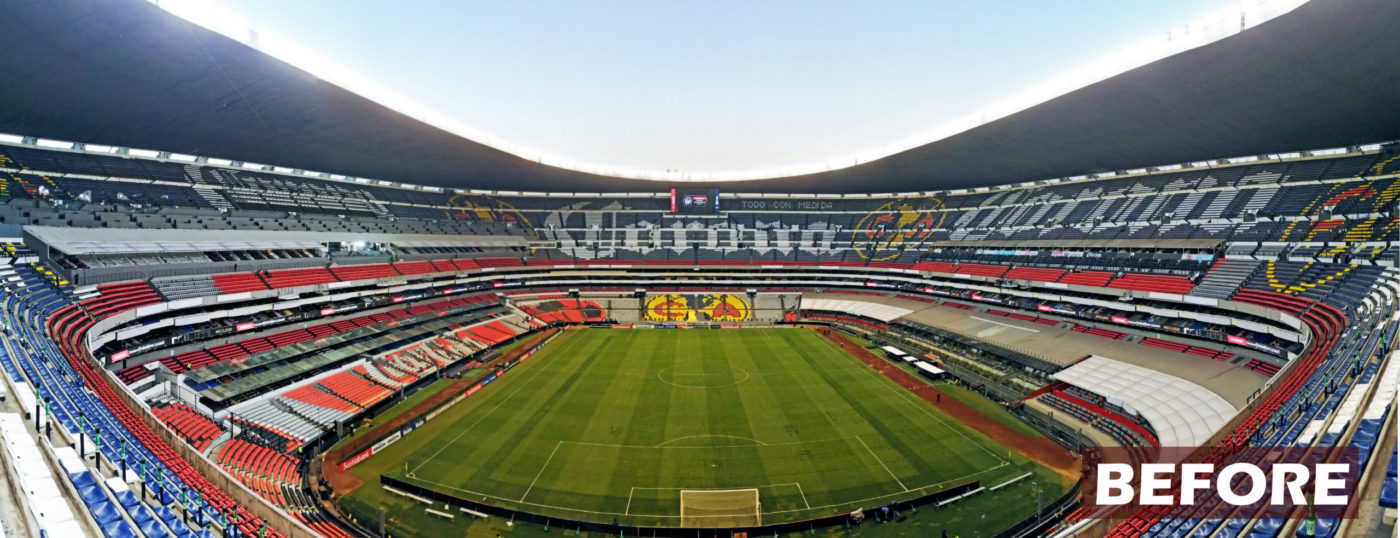The legendary Azteca stadium will be the first American stadium to import the image and marketing innovation of the new era of Spanish stadiums.
The one known as “Colossus of Santa Úrsula” is perhaps the most mythical stadium in the history of world football, since it is the only one where 2 World Cup finals have been held. The first in 1970 was the consecration of Pelé. Just 16 years later, Maradona was the figure who admired the world in the 1986 World Cup. Two “gods” of the ball who consecrated Azteca as the temple of soccer.

Now, the largest stadium in Mexico is preparing to host its third World Cup. It will be in 2026, the first time that 3 countries will jointly host the World Cup (Canada, the United States and Mexico). With 6 years to go before the competition, the organizational machinery has already started to prepare the Azteca stadium for the World Cup And to do so, Mexican responsible have set their sights on the innovations provided by Molcaworld.
The Spanish company began to revolutionize the stadiums in 2014, when Valencia CF decided to make a complete renovation of the image of the Mestalla stadium, while seeking financing to build a new venue The project exceeded all expectations, and very soon made the oldest stadium in the Spanish competition one of the ones with the best image.

The techniques used by Molcaworld, which gave vital importance to the television image and the promotion of the stadium’s marketing, were quickly adopted by the Spanish LaLiga, which published a manual with image recommendations based on Mestalla’s innovations.
Soon, Sevilla CF followed in Valencia’s footsteps and commissioned Molcaworld to carry out the full rebranding of Sánchez Pizjuán. An even more ambitious project that transformed the mythical Nervión stadium into a new generation venue in just a few months of work.

From there, many front-line stadiums were added: La Rosaleda (Málaga), Benito Villamarín (Betis), Balaídos (Celta), Valencia City (Levante UD), El Alcoraz (Huesca), El Sadar (Osasuna), Son Moix (Mallorca), etc. In many cases it was about comprehensive reforms, but in others interventions were carried out in phases, focusing on interior spaces such as changing rooms, player tunnels and, especially, VIP experiences, which showed that the Molcaworld system was also extremely flexible.

This revitalization of stadiums, based above all on that fast and economical method, was also started to be used in newly built stadiums, such as the Wanda Metropolitano del Atlético de Madrid. A stadium in which Molcaworld collaborated designing and implementing the changing rooms, hallways, the exit tunnel to the field of play, the mixed zone, the stands and advertising supports, among others.

This work confirmed that the commercial, fan engagement and motivational results of the players in the stadiums revitalized by Molcaworld can be compared to those achieved by the newly built ones. The figures in all of them show growth in fan attendance of up to 50% and increases in ROI of up to 1,300%, numbers that favor the collaboration of more and more sponsors.
The big difference between a new stadium and a «re-branded» one, lies in the amount of money invested, much less in the case of rejuvenated stadiums, which favors a return on investment of less than a year in most cases.
60 years after its inauguration, in its third world championship, the Azteca will look like new thanks to the work of Molcaworld. . A revitalized stage to shine a new figure in football in 2026 that, surely, will continue the story that Pelé began in 1970 and Maradona in 1986.

